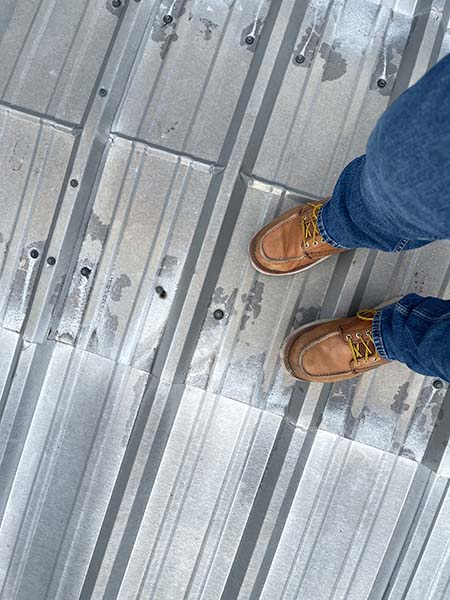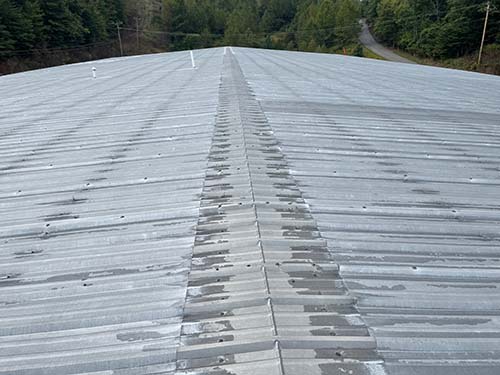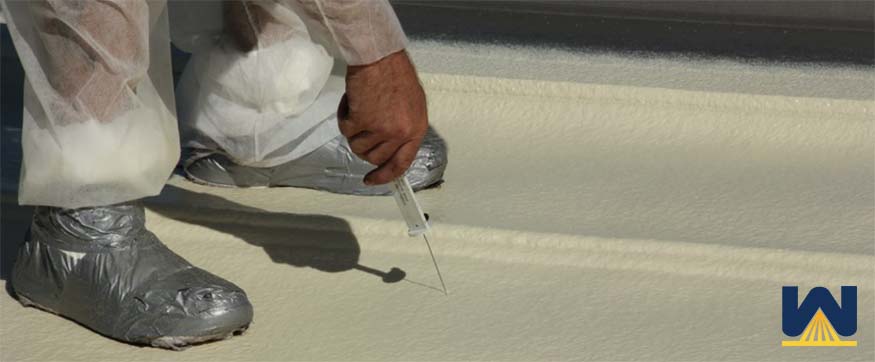Summary: Spray foam is fluid-applied that expands into a solid, thus it’s a great roofing system that fills in any microscopic pinholes, cracks, and leaks in an existing roof.
So, your commercial roof is leaking but you’re unsure where the leaks are coming from. Could it be the seams, around that HVAC unit, etc.?
If this is happening to your building, a great place to start is by contacting a roofing contractor who can evaluate the current situation.
They will start with a visual inspection. If needed, they can pull core samples and/or perform an infrared inspection to determine where the leaks are and how much of the insulation is wet and damaged.
But let’s say after an inspection multiple areas are leaking. What is your most cost-effective solution?
The answer is spray polyurethane foam or a silicone roof coating system.
In this article, you’ll learn:
- How tiny holes are created?
- Why spray foam is a great option to seal tiny holes?
- What “non-spray foam” solutions do you have?
And just so you know, West Roofing Systems has been in commercial roofing since 1979. We specialize in spray polyurethane foam roofing, as well as silicone roof coating systems. Both systems are seamless and fluid-applied, which makes them great for sealing all holes in an existing roof.
Every blog post written by West Roofing Systems is reviewed and edited by one of our internal salespeople with more than 30 years of spray foam experience.
Let’s get started!
How tiny holes are created?
Imagine this image:

We can see at least 13 fasteners and multiple seams in this small area. Any one of these fasteners can back out a tiny bit. This will allow water to continuously enter your roof system.
Now imagine how many water-entry opportunities this roof has!!!

Roofs endure the worst of the worst when it comes to the weather. They are exposed 100% of the time.
Roofs in certain climates that have cold winters and warm summers, such as some Midwest states, the roof temperature could fluctuate 100 degrees in a single day.
Think about all the expansion and contraction. And this happens every single day for years on end.
Tiny holes can happen for many reasons, such as:
- Fasteners can back out, wear out, or get damaged by foot traffic
- Seams can wear out, crack, or lose adhesion. Even a microscopic opening is enough for water to enter
- Adhesives and sealants used on a roof can dry out, crack, or burn away by UV rays
- Mechanical damage can happen, such as dropped tools, knives, or other equipment
- Sharp branches can cause a slit or small hole (not in metal, but single-ply roofs)
- Algae and other plant life can grow in ponding water; the roots can damage a roof membrane
And there are probably many other reasons.
Why spray foam is a great option to seal tiny holes?
Spray polyurethane foam is a mixture of a polyiso and a resin. The combination is heated and pressurized to travel from a work truck, through hoses, to a spraying gun.
The mixture comes out as a liquid. Within 10-20 seconds, the liquid rises 30x in size and hardens.
Here’s a video showing spray foam being applied around a box. Watch as the liquid rises and hardens, fully encapsulating the box to the floor:
Spray foam isn’t just applied around HVAC units, pipes, and drains. It’s a complete roofing system that goes over 100% of your existing roof.

Installing a liquid that expands and cures is a great way to seal any water entry points on a roof.
But let’s say you’d like to consider other options?
If you don’t want to use spray foam, you can install “patches” on your roof. Once you’ve identified the area that’s leaking, you can cut around the area, remove all the wet insulation and membrane, dry the area out, and install new insulation and membrane.
There are a few issues with this.
- Are you finding all the areas with leaks? Think of a metal roof with potentially hundreds of microscopic pinholes. Also, there are hundreds of fasteners and seams that run the whole length of the roof. If you’re patching, you might miss a leaking area.
- There could be issues with the patching job. Did the contractor cut around the leaking area large enough? Is the patch overlapping enough? Is the sealant going to hold up?
You can repair holes in your roof by patching, but it’s not guaranteed that you’ll find every water entry point.
Should you repair tiny holes or install a new roofing system?
Perhaps you’re thinking, should I pay to repair these holes, or just go with a new roof? Here are some questions to help you decide:
What is your budget?
If you have the money, it might be cost-effective long-term to get a new roofing system. Assuming the entire roof was installed at the same time, often, repairs lead to more repairs.
It would be devasting to pay for repair after repair, and then be forced to install a whole new roofing system shortly after.
How much of the insulation is wet?
If a roofing contractor performs a nuclear moisture scan and/or pulls core samples and finds that more than 25% of the roof’s insulation is wet, some building codes require a complete tear-off.
If not, you can restore the roof (avoiding 100% tear-off) with spray foam. Another cost-effective and popular option is a silicone roof coating system.
What’s the condition of the membrane?
If the membrane looks to be in good shape, then do the simple repairs. But if the membrane is projected to only have a few years left, you may want to consider installing a new roofing system.
Conclusion
Since most people are unaware of spray foam, we wanted to introduce the system. In some roofing situations, such as built-up roofing systems or metal roofs, leaks are harder to locate.
With spray foam being fluid-applied that expands, it will seal any tiny holes in an existing roofing system.
Here are some popular articles about spray foam roofing:
- The 7 Advantages That Spray Foam Roofing Has.
- The Pros and Cons of Metal, Single-ply, Roof Coating Systems, and Spray Foam Roofing.
And if you’re trying to learn more about spray foam, please consider downloading our eBook below, which covers:
- The pros of spray foam roofing
- The problems with spray foam roofing
- Photos of spray foam roofing
And much more!


